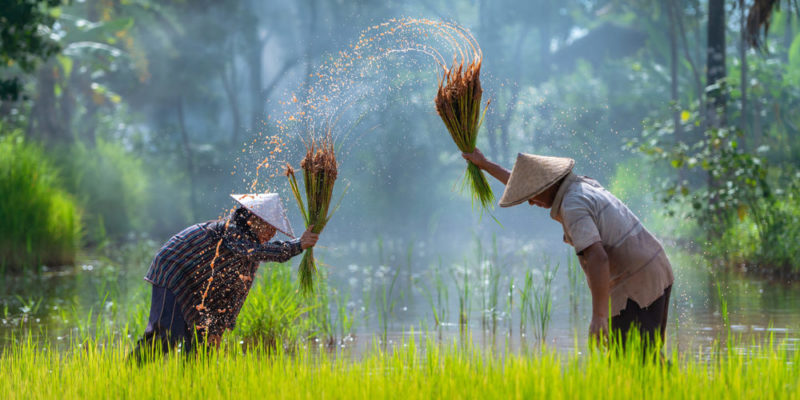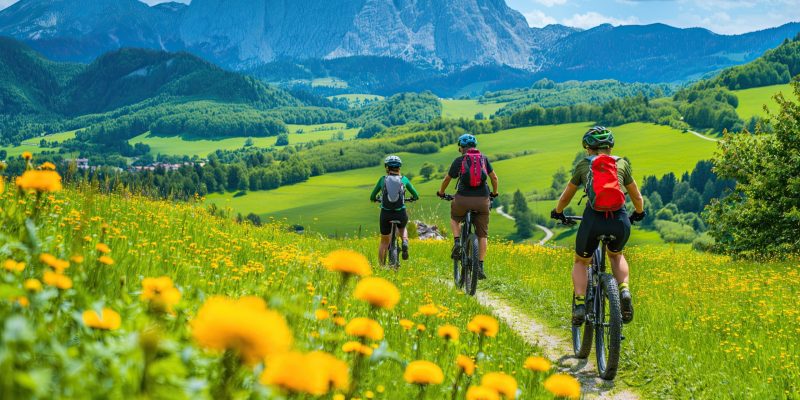We explain what the rural population is and what its characteristics, its problems and its history are. Also, its differences with the urban population.

What is the rural population?
The rural population is those who live outside the cities, in small towns or dispersedly Rural areas are characterized by having low population density and mainly agricultural economic activities.
Rural populations are as old as civilization itself. In fact, the first permanent settlements of human beings arose hand in hand with agricultural activity and domestication, since it was more productive to stay in the same place and exploit the soil than to wander in search of food.
At the moment, 44% of the world's population lives in rural areas which represents about 3.6 billion people. The majority are found in peripheral countries, which base their economy on the exploitation and export of raw materials.
These activities, when they are not technical as in the central countries, require a large amount of labor. For this reason, the majority of the rural population has jobs linked to the agricultural, livestock or mining sector.
Characteristics of the rural population

The main characteristics of the rural population are:
- It is one who lives in the countryside, that is, outside the cities.
- It represents 44% of the world's population.
- Most people work in agriculture, livestock or mining.
- The possibility of accessing services such as electricity, drinking water or natural gas are reduced compared to cities.
Differences between rural population and urban population

Urban areas, unlike rural areas, are those where large and small cities are located and where industrial and service activities are mainly carried out. Furthermore, population density in rural areas is usually low, while urban areas can be home to millions of inhabitants. In the city of Tokyo, for example, there are more than 43 million inhabitants, while in Casa Colorada, a rural town in northern Argentina, only 59 people live.
| Rural area | urban area | |
|---|---|---|
| Economy | Economic activities linked to the primary sector, especially agriculture and livestock. | Economic activities linked to the secondary and tertiary sectors. |
| Population | Low population density. | High population density. |
| Transport | Little public transport offer (most people use their own transport, such as car, motorcycle or bicycle). | There is a lot of public transportation (trains, buses, subways, ports, airports, taxis), which brings traffic and circulation problems. |
| Services | Gas, electricity, drinking water and Internet do not reach everywhere and many times hospitals or schools are located at great distances. | Greater availability of services and a large number and variety of educational and health offers. |
| Cost of living | Cheaper cost of living and material goods. | Cost of living and more expensive material goods. |
| Waste | Less production of urban solid waste, but great exposure to contamination from chemical waste from the countryside. | Greater production of urban solid waste and greater exposure to industrial pollution. |
Problems of the rural population
Some of the main problems of the rural population are:
- Limited access to basic services. The distance from urban centers and the dispersion of the population make the provision of services difficult. For this reason, in rural areas access to drinking water, natural gas, Internet connectivity or sewers is very limited. The same happens with the possibility of accessing educational, health or public transportation services.
- Employment problems. The increasing modernization of the countryside in recent decades has generated severe employment problems in the rural population. Furthermore, many times the jobs are temporary: people work for a few months and the rest of the year they cannot easily find another job.
- Migration and depopulation. Rural areas have experienced, in recent decades, a strong process of migration to cities and depopulation. As most of those who emigrate are young people in search of work and opportunities, there is an aging process of the rural population and a reduction in the available labor force.
History of the rural population
During ancient times, The rural population was the basis of the economies of civilizations such as the Greek and Roman where agriculture was the main productive activity. The lands were concentrated in the hands of the elites, while the peasants, often as tenants or slaves, worked the land.
In the Middle Ages, The social and economic structure of Europe was organized around feudalism a system in which feudal lords owned large tracts of land and peasants worked in exchange for protection and a small plot of land for their subsistence.
Already in the 15th century, the colonization of America and other regions involved the exploitation of natural resources and the imposition of agricultural systems intended for export, such as the plantations that the conquistadors imposed on much of Central America.
The development of new technologies as a consequence of the Industrial Revolution of the 18th century promoted the migration of the rural population to the cities in search of work in factories. This process intensified in the 19th century and continued during the 20th century, which produced the gradual reduction of the rural population and the increase of the urban population.
During the 20th century, technological advances in agriculture, such as mechanization and the development of irrigation and fumigation technologies, boosted agricultural productivity, but also contributed to the decrease in the labor needed in the field, so that there was an exodus of a good part of the rural population to the cities.
Currently, the rural population represents a smaller proportion of the global population compared to previous periods especially in industrialized countries. However, in many regions of the world, particularly in peripheral countries, millions of people continue to live in rural areas and depend on agriculture or livestock for their subsistence.
Rural population of Mexico
As in many other Latin American countries, The Mexican population has an eminently agricultural history. The colonial society established by the Spanish crown in the 16th century had an extractivist character: the main objective was to cultivate and exploit the resources of American soil to send them to the European metropolis.
This development model was maintained despite independence, and many of the conflicts of the 19th and 20th centuries, such as the Mexican Revolution, were, in essence, problems related to land ownership.
At the beginning of the 20th century, Mexico's rural population was 66% and only in 1960 the urban population began to be the majority. The rural population continued to decline throughout the century, and currently represents only 21%. The states with the highest percentage of rural population are Chiapas (50.8%), Oaxaca (50.5%) and Hidalgo (42.7%).
document.addEventListener(“DOMContentLoaded”, (e) => {
var sliderContainer, slider;
sliderContainer = document.getElementById(‘block_8f02eda42c0b2a6180e3887e3cb36384’);
if (typeof initSlider !== ‘function’) {
console.log(‘Swiper haven\’t been loaded’);
sliderContainer.className += ‘ fw scroll-snap’;
return;
};
options = {
direction: ‘horizontal’,
speed: 1000,
slidesPerView: ‘auto’,
// slidesPerGroup: 1,
centerInsufficientSlides: true,
// centeredSlides:true,
spaceBetween: 15,
breakpoints: {
720: {
// centeredSlides: false,
// slidesPerGroup: 2,
spaceBetween: 25
},
},
pagination: {
el: ‘.swiper-pagination’,
type: ‘bullets’,
clickable: true
},
}
slider = initSlider(sliderContainer, options);
})
References
- Economic Commission for Latin America and the Caribbean. (sf). Definition of urban and rural population used in the censuses of Latin American countries. https://www.cepal.org/
- Iborra M. and Íscaro, M. (2022). Agribusiness and the configuration of new rural territories in Argentina. In D. García Ríos (Comp.), Argentina: network of geographies in dispute (pp. 149-169). Cartogram.
- INEGI.(sf). Rural and urban population. Tell me about Mexico. https://cuentame.inegi.org.mx/
- SEMARNAT. (sf). Rural and urban population. Government of Mexico. https://apps1.semarnat.gob.mx:8443/





